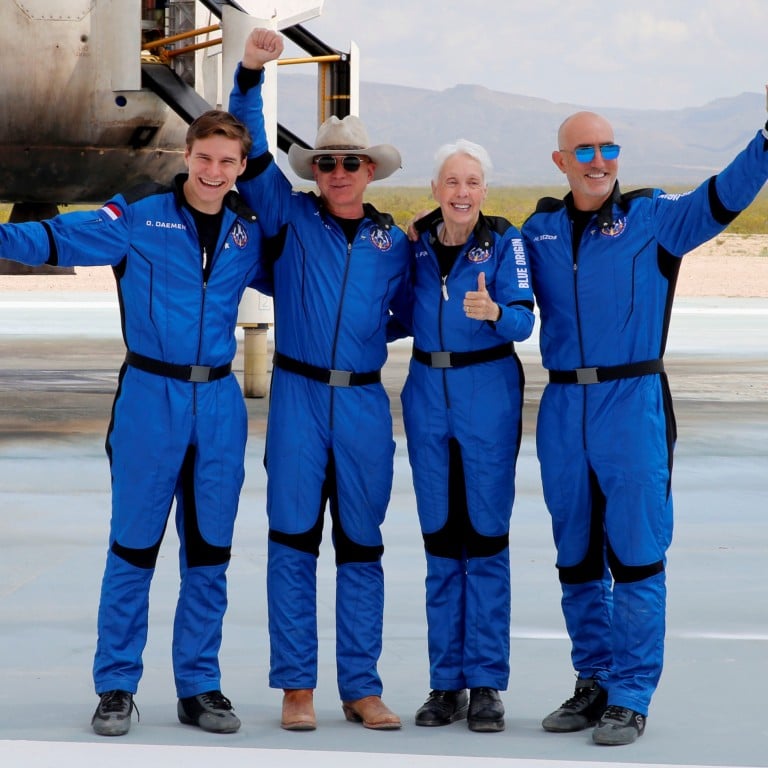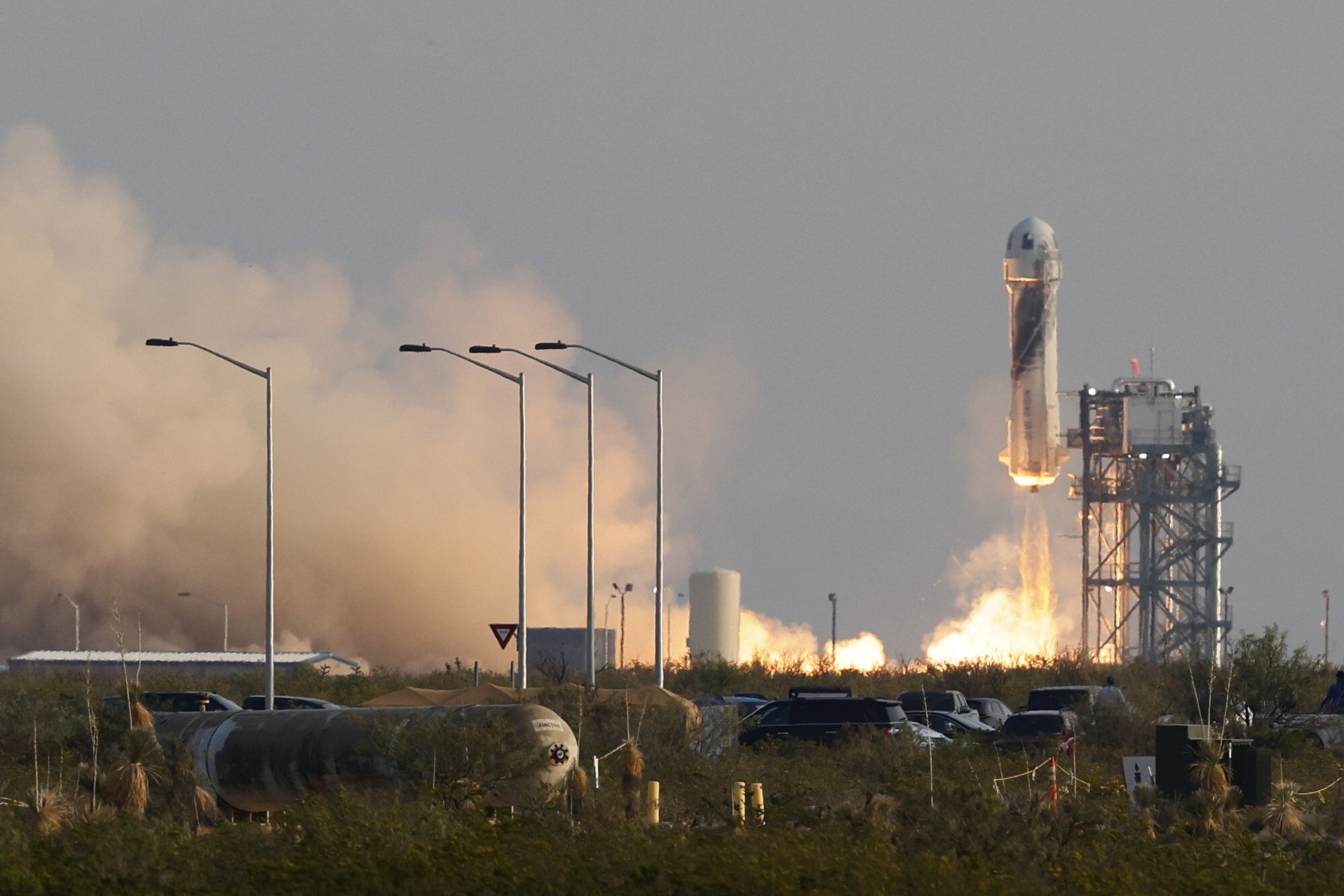Jeff Bezos’ Blue Origins space trip was out of this world – everything you need to know about the retired Amazon CEO’s ride on the world’s first unpiloted suborbital flight

Jeff Bezos just joined the very small cohort of people who have launched into space and gazed at Earth from above.
Is space the next frontier of luxury? Bezos, Musk and Branson seem to think so

The company is hoping for many more, though – it plans to fly tourists regularly on New Shepard but has yet to open ticket sales.

The group lifted off at 9:12am Eastern Time from a launch pad in West Texas. The New Shepard’s engines roared to life, and the rocket heaved itself off the ground, screaming through the atmosphere for three minutes. Bezos and his companions were pinned to their seats as the feeling of Earth’s gravity grew three times stronger than normal.
Then the rocket booster separated from the capsule, giving it a final push past the Kármán line – an imaginary boundary 62 miles (100 kilometres) above sea level, where many experts say space begins.
Inside Richard Branson and Elon Musk’s unlikely friendship

Bezos and his companions had just about three minutes to float around weightless in the capsule and admire the Earth curving below before gravity began to pull them back down.
As the capsule plunged back toward the ground, a panel of heat-resistant tiles protected it as friction superheated the surrounding atmosphere.
“You have a very happy crew up here, I want you to know,” Bezos told mission controllers as they descended.

Then three parachutes ballooned overhead, slowing the capsule to a landing in the Texas desert. The rocket booster, meanwhile, returned itself to a landing pad to launch another day.
The entire launch and flight were autonomous – with no pilots – and lasted just 11 minutes.
“Today’s launch represents a number of firsts,” Ariane Cornell, Blue Origin’s director of astronaut sales, said during a live-stream of the flight. “The first time a privately funded space flight vehicle has launched private citizens to space from a private launch site and private range down here in Texas. It’s also a giant first step towards our vision to have millions of people living and working in space.”
Jeff Bezos’ 5 most extreme adventures so far ... before flying into space

Bezos’s goals extend beyond flying tourists to the edge of space. He intends to use New Shepard trips to fund more ambitious projects that could pave the way for humans to establish settlements off-planet.
Blue Origin is building a larger, more powerful reusable rocket called New Glenn – after John Glenn, the first American to orbit Earth. (New Shepard is named for Alan Shepard, the first American to reach space.) New Glenn is meant to carry heavy loads into orbit around Earth or even to the moon.

“Our vision is millions of people living and working in space, and New Glenn is a very important step. It won’t be the last of course,” Bezos said in a statement in 2016. “Up next on our drawing board: New Armstrong. But that’s a story for the future.”
How did new Amazon CEO Andy Jassy get his start?

Neither Bezos nor Blue Origin have shared details about New Armstrong.
Bezos believes that to avoid natural limits on the human population and energy use, humanity must spread off its home planet. Otherwise, human civilisation will stop growing due to resource caps.

“I’m pursuing this work because I believe if we don’t, we will eventually end up with a civilisation of stasis, which I find very demoralising,” Bezos told Mathias Döpfner, the CEO of Axel Springer, in 2018.
“Now take the alternative scenario, where you move out into the solar system. The solar system can easily support a trillion humans,” Bezos continued. “We would have a thousand Einsteins and a thousand Mozarts and unlimited – for all practical purposes – resources and solar power and so on. That’s the world that I want my great-grandchildren’s great-grandchildren to live in.”
6 female astronauts who beat Jeff Bezos to space

Bezos is now the second person to launch aboard his own company’s commercial space vehicle. Richard Branson, who founded Virgin Galactic in 2004, completed a similar suborbital flight aboard his company’s space plane on July 11.
But Blue Origin has argued that Branson didn’t go to space, since he only flew to about 55 miles (89km) above sea level and did not pass the Kármán line. However, both Nasa and the Federal Aviation Administration have awarded astronaut wings to pilots who flew past 50 miles.
Want more stories like this? Sign up here. Follow STYLE on Facebook, Instagram, YouTube and Twitter.

- Richard Branson might have beaten Bezos to space, but he didn’t pass the fabled Kármán line – Elon Musk’s SpaceX will blast off next
- Bezos was joined on the historic flight by his brother Mark, 18-year-old Dutch high school graduate Oliver Daemen and 82-year-old aviator Wally Funk